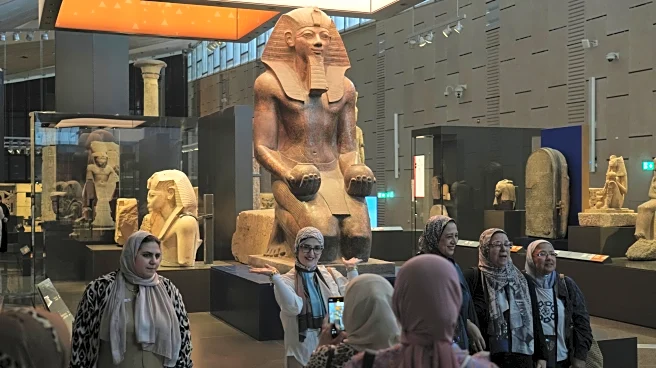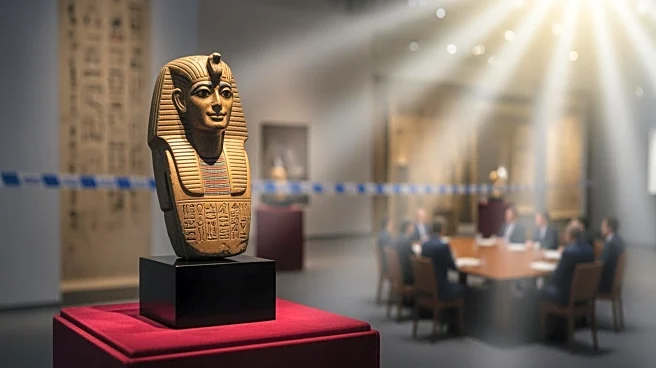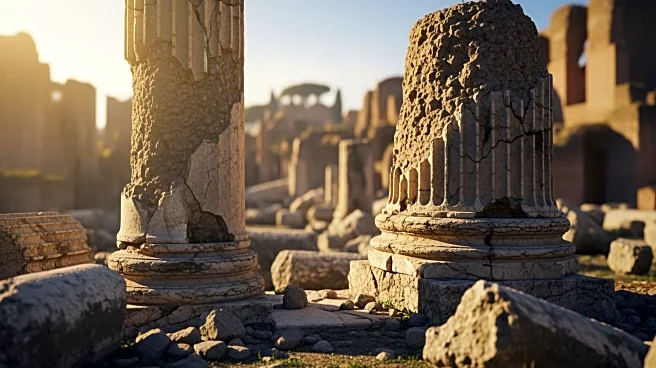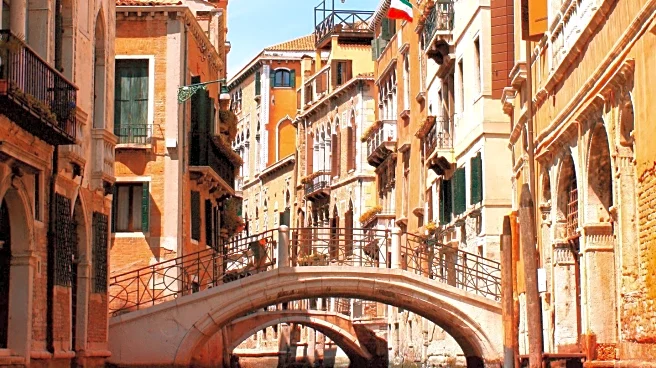What's Happening?
The Parthenon in Athens, Greece, has recently seen the removal of scaffolding from its western facade, marking the first time in 20 years that this part of the ancient structure is visible without obstruction. This development is part of a long-term restoration
project that began in 1975, aimed at preserving the integrity of the UNESCO World Heritage Site. The Parthenon, originally built in the 5th century B.C.E. to honor the goddess Athena, has served various roles throughout history, including as a church and a mosque. The current restoration efforts have focused on correcting past conservation mistakes, such as the improper placement of marble blocks and the use of iron components that led to structural damage. The project has involved replacing these with more durable materials and relocating sculptures to a climate-controlled museum. The scaffolding is expected to return temporarily but is slated for permanent removal by next summer, allowing visitors to experience the Parthenon in its full glory.
Why It's Important?
The restoration of the Parthenon is significant not only for its cultural and historical value but also for its impact on tourism and education. As a major tourist attraction, the Parthenon draws thousands of visitors daily, contributing significantly to Greece's economy. The removal of scaffolding enhances the visitor experience, offering unobstructed views of the monument. Additionally, the restoration project serves as a model for conservation efforts worldwide, demonstrating the importance of using appropriate materials and techniques in preserving historical structures. The project also highlights the ongoing challenges in maintaining ancient sites, balancing the need for preservation with public access and enjoyment.
What's Next?
The next steps in the Parthenon's restoration include the completion of work on the west facade's pediment, which involves replacing ancient pieces and modern supports. Authorities plan to install a new, more aesthetically pleasing scaffolding setup that aligns with the monument's historical context. This scaffolding is expected to be removed permanently by next summer, although future discoveries of missing pieces could necessitate its return. The ongoing restoration efforts will continue to be monitored by the Acropolis Restoration Service, ensuring that the Parthenon remains a testament to ancient Greek architecture and resilience.
Beyond the Headlines
The Parthenon's restoration raises broader questions about the ethics of historical conservation, particularly regarding the repatriation of cultural artifacts. The removal of sculptures by Lord Elgin in the 19th century remains a contentious issue, with ongoing debates about their rightful home. The project also underscores the importance of international collaboration in preserving world heritage sites, as the techniques and materials used in the Parthenon's restoration could benefit similar efforts globally. Furthermore, the restoration highlights the role of cultural heritage in fostering national identity and pride, as well as its potential to bridge cultural divides through shared appreciation of history.















